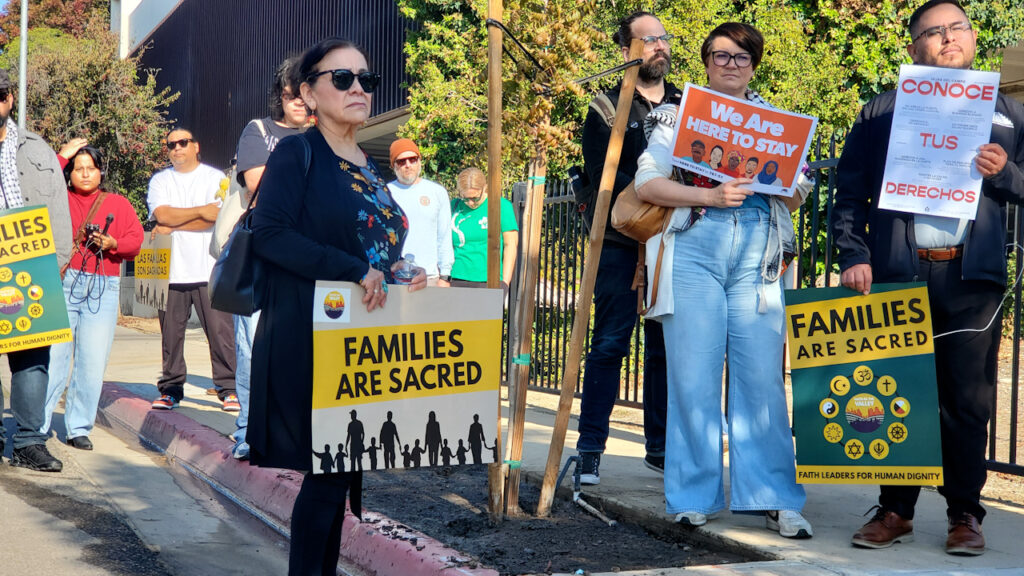California's history of new town development faces challenges as population growth slows and a major project in Solano County stalls. (CalMatters/Loren Elliott)

- California's town creation has evolved from mission-based settlements to developer-driven communities over two centuries.
- The ambitious California Forever project in Solano County faces opposition and has shelved its ballot measure.
- With population decline and housing policies favoring infill, new town development faces an uncertain future in California.
Share
|
Getting your Trinity Audio player ready...
|
When California emerged from its colonial beginnings nearly two centuries ago and began coalescing into a distinct society, its towns and villages tended to be located either on navigable rivers, such as Sacramento, or around the 21 missions that Spanish explorer priests had established, such as San Diego.

Dan Walters
CalMatters
Opinion
In the late 19th century, with California having experienced a massive population boom during the Gold Rush and become a state, entirely new communities sprung up. These settlements were often carved out of farm and ranch land by developers and railroads, the small San Joaquin Valley city of Hanford being one of the latter.
For example, the small villages south of San Francisco, such as Hillsborough, were designed as refuges for the wealthy from the noise, pollution and violence of San Francisco — and eventually led to the formation of San Mateo County as a protective bulwark.
The creation of new towns continued for most of the 20th century. In Orange County, the descendants of 19th century ranchers converted chunks of their vast holdings into new towns to absorb the region’s massive post-World War II population growth.
The most spectacular example was — and still is — the City of Irvine, named for a ranching family, and home to a quarter-million people and a major University of California campus. Dick O’Neill, heir to a huge Orange County cattle ranch, created two cities — Mission Viejo and Rancho Santa Margarita.
On the outskirts of Sacramento, along the Cosumnes River, another ranching family successfully created a stand-alone community called Rancho Murieta.
Creating new towns can be a risky endeavor. Developers can spend millions to plan their new communities and install infrastructure but may wait decades to see a profit.
Related Story: Newsom Issues Executive Order for Removal of Homeless Encampments in California
California City, in the Antelope Valley 100 miles north of Los Angeles, was founded in 1958, but its remote location and somewhat inhospitable terrain and climate made attracting residents difficult. It’s still there and has about 15,000 residents, but that’s way short of the original ambition.
Mountain House, created three decades ago in a corner of San Joaquin County to attract commuters to Bay Area jobs, also struggled, particularly during the collapse of the housing market during the Great Recession. However, it survived: Today it has about 25,000 residents and on July 1 became an incorporated city.
The Tejon Ranch, an immense cattle ranch in the Tehachapi Mountains, has been trying for decades to create a new residential community, but it has faced massive opposition from environmental groups. It is finally beginning construction on an apartment complex.
Related Story: Newsom Issues Executive Order for Removal of Homeless Encampments in California
That brings us to California’s latest effort to carve out a new community, this one in a rural portion of Solano County.
California Forever, a company backed by Silicon Valley billionaires, quietly — even sneakily — bought more than 50,000 acres of ranchland, after which it finally revealed plans for a new community that would eventually have 400,000 residents.
The secrecy and scope of the project generated immediate opposition, particularly after the company said it would seek approval via a November election ballot measure, bypassing hurdles such as the California Environmental Quality Act.
With approval by Solano County voters in doubt, California Forever has shelved its ballot measure. Company officials say they now will strive to gain popular support before proceeding.
Related Story: Frustrated Californians May Be Ready for a Tougher Approach to Crime
The explosive growth that California experienced in the first 170 years of its existence as a state has now abated, probably for good. California has been losing population in recent years and at best it will probably see population stagnation in the future.
That said, California still has a housing shortage, and state policy is to encourage infill projects in or near cities rather than developing open spaces, which California Forever would do.
The chances for California Forever to join the ranks of new town developers are slim at best.
About the Author
Dan Walters has been a journalist for nearly 60 years, spending all but a few of those years working for California newspapers. He began his professional career in 1960, at age 16, at the Humboldt Times.
CalMatters is a public interest journalism venture committed to explaining how California’s state Capitol works and why it matters. For more columns by Dan Walters, go to calmatters.org/commentary.
Make Your Voice Heard
GV Wire encourages vigorous debate from people and organizations on local, state, and national issues. Submit your op-ed to bmcewen@gvwire.com for consideration.
RELATED TOPICS:
Categories



















